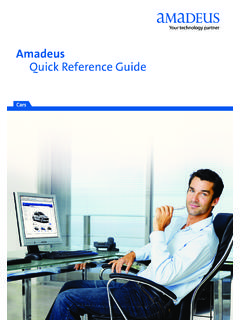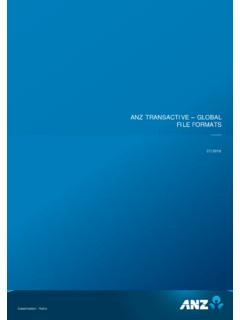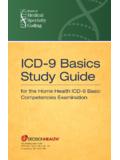Transcription of Test at a Glance - SPED Toolbox
1 Special Education: Core Knowledgeand Mild to Moderate Applications(0543/5543)Test at a GlanceTest NameSpecial Education: Core Knowledge and Mild to Moderate ApplicationsTest Code05435543 Time2 hours2 hoursNumber of Questions90 multiple-choice questions;3 integrated constructed-responsequestions90 multiple-choice questions;3 integrated constructed-responsequestionsFormatMulti ple choice: 75% of total scoreIntegrated constructed response:25% of total scoreMultiple choice: 75% of total scoreIntegrated constructed response:25% of total scoreTest DeliveryPaper deliveredComputer deliveredContent CategoriesApproximateNumber ofQuestionsApproximatePercentage ofExaminationI. Development and Characteristicsof Learners1714%II. Planning and the LearningEnvironment2017%III. Instruction2017%IV.
2 Assessment1714%V. Foundations and ProfessionalResponsibilities1613%VI. Integrated Constructed ResponseQuestions325%About This TestThe Special Education: Core Knowledge and Mild to Moderate Applications test is designed for examinees who plan to teachstudents with mild to moderate disabilities at any grade level from preschool through grade 12. Its focus is on five majorcontent areas: Development and Characteristics of Learners, Planning and the Learning Environment, Instruction, Assessment,and Foundations and Professional Responsibilities. The 90 multiple-choice questions assess the knowledge and understandingof principles and practices related to special education and mild to moderate applications. The three constructed-responsequestions are integrated ones that assess an examinee s knowledge of students with mild to moderate disabilities as related toinstruction and assessment, learning environment and classroom management, and collaboration.
3 Some of the questions onthis test may not count toward your 2012 by Educational Testing Service. All rights reserved. ETS, the ETS logo, LISTENING. LEARNING. LEADING., PRAXIS I, PRAXIS II, and PRAXIS IIIare registered trademarks of Educational Testing Service (ETS) in the United States and other countries. PRAXIS and THE PRAXIS SERIES are trademarksof ETS. 86011 VIIVVIIIIIIT opics CoveredA summary of the topics covered in each category is provided Development and Characteristics of Learners(Approximately 14%) Human development and behavior Theoretical approaches to student learning andmotivation Basic characteristics and defining factors for each ofthe major disability categories Impact of disabilities on individuals, families, andsociety across the life span Impact of language, cultural, and gender differenceson the identification process Co-occurring conditions How family systems contribute to the development ofindividuals with disabilities Environmental and societal influences on studentdevelopment and achievementII.
4 Planning and the Learning Environment(Approximately 17%) Characteristics of good lesson plans Basic elements of effective lesson plans Learning objectives that are measurable andappropriately challenging Means of providing access to the curriculum Organizing the learning environment Understands how to manage student behavior Design and maintenance of a safe and supportiveclassroom environment that promotes studentachievementIII. Instruction (Approximately 17%) Instructional strategies/techniques that areappropriate, considering students ages and abilities Instructional strategies for ensuring individualacademic success in one-to-one, small group, andlarge group settings Instructional strategies that facilitate maintenance andgeneralization of concepts Selection and implementation of research-basedinterventions for individual students Selection and implementation of supplementaryand/or functional curriculum Options for assistive technology Instructional strategies/techniques that supporttransition goals Preventive strategies and intervention strategies forat-risk learnersIV.
5 Assessment (Approximately 14%) Evidence-based assessments that are effective andappropriate Defines and uses various assessments Interprets assessment results Understands and uses the results of assessmentsV. Foundations and Professional Responsibilities(Approximately 13%) Federal definitions Federal requirements for the pre-referral, referral,and identification Federal safeguards of the rights of stakeholders Components of a legally defensible individualizededucation program Major legislation Roles and responsibilities of the special educationteacher Roles and responsibilities of other professionals whodeliver special education services Strengths and limitations of various collaborativeapproaches Communication with stakeholders Potential bias issues that may impact teaching andinteractions with students and their familiesVI.
6 Integrated Constructed Response Questions (25%) Instruction and Assessment Learning environment and classroom management CollaborationSpecial Education: Core Knowledge and Mild to Moderate Applications(0543/5543)Copyright 2012 by Educational Testing Service. All rights reserved. ETS, the ETS logo, LISTENING. LEARNING. LEADING., PRAXIS I, PRAXIS II, and PRAXIS IIIare registered trademarks of Educational Testing Service (ETS) in the United States and other countries. PRAXIS and THE PRAXIS SERIES are trademarksof ETS. 86012 This test is available via paper delivery or computer delivery; other than the delivery method, there is no difference betweenthe tests . The test content is the same for both test illustrate what the computer-delivered test looks like, the following sample question shows an actual screen used in acomputer-delivered is the same sample question as it would appear on a paper-delivered test:Which of the following is the capital of theUnited States?
7 (A) New York, NY(B) Washington, DC(C) Chicago, IL(D) Los Angeles, CAFor the purposes of this guide, sample questions are provided as they would appear in a paper-delivered Education: Core Knowledge and Mild to Moderate Applications(0543/5543)Copyright 2012 by Educational Testing Service. All rights reserved. ETS, the ETS logo, LISTENING. LEARNING. LEADING., PRAXIS I, PRAXIS II, and PRAXIS IIIare registered trademarks of Educational Testing Service (ETS) in the United States and other countries. PRAXIS and THE PRAXIS SERIES are trademarksof ETS. 86013 Sample Test QuestionsThe sample questions that follow illustrate the kinds ofquestions on the test. They are not, however, representativeof the entire scope of the test in either content or with explanations follow the : Each of the questions or statements below isfollowed by four suggested answers or the one that is best in each : In this test, the following special education terminologywill appear: Individualized Education Program may be referredto as an IEP; Attention-deficit/hyperactivity disorder may bereferred to as ADHD; The Individuals with Disabilities Education Act maybe referred to as IDEA; A multidisciplinary team or Child Study Team maybe referred to as an IEP team; A teacher assistant, teacher aide, or paraeducatormay be referred to as a paraprofessional; The No Child Left Behind Act may be referred toas NCLB.
8 A biological parent, legal guardian, surrogate, natural,adoptive, or foster parent may be referred to as Sharmaine is a second-grade student who has beenfound eligible for special education under theclassification of intellectual disability. She receives dailymathematics instruction in a resource room. Her specialeducation teacher wants to introduce Sharmaine to theaddition of single digit numbers. Which of the followingstrategies would be the best activity to use?(A) Make a ten(B) Skip counting(C) Counting backward(D) Front-end addition2. The least restrictive environment (LRE), as defined inIDEA, requires that students with a disability be(A) educated with nondisabled peers only for electivecourses(B) educated with nondisabled peers to the greatestextent possible(C) educated in a special school so that there is nointeraction with nondisabled peers(D) educated with the most assistance, whether or notit be in the same environment as with nondisabledpeers3.
9 Toni is a seventh-grade student classified with a specificlearning disability (SLD). Her science teacher statesthat she is an active participant in class, completeshomework on time, but her reading comprehensionis below grade level. A chapter test is planned fornext week. Which of the following assessmentaccommodations would be most appropriate forToni s individualized education program (IEP)?(A) Allowing the use of a dictionary to check spelling(B) Reading the test aloud to her(C) Administering the test to her in a separate room(D) Providing her frequent breaks during testing4. Trish is a sixth-grade student who is diagnosed withautism. She has difficulty maintaining eye contact andmakes impulsive comments during lessons. Which ofthe following behavioral strategies would best helpTrish?
10 (A) Assigning Trish a peer buddy to help her keep ontask(B) Providing Trish a visual menu of appropriatebehaviors(C) Seating Trish next to the window so she can lookoutside(D) Giving Trish high-interest, low-reading-levelassignmentsSpecial Education: Core Knowledge and Mild to Moderate Applications(0543/5543)Copyright 2012 by Educational Testing Service. All rights reserved. ETS, the ETS logo, LISTENING. LEARNING. LEADING., PRAXIS I, PRAXIS II, and PRAXIS IIIare registered trademarks of Educational Testing Service (ETS) in the United States and other countries. PRAXIS and THE PRAXIS SERIES are trademarksof ETS. 860145. Isaac is a fourth-grade student who has been classifiedwith a mild cognitive impairment. He struggles tocomplete assignments independently, requiresredirection to keep on task, and needs to be constantlyreminded of the classroom rules.





